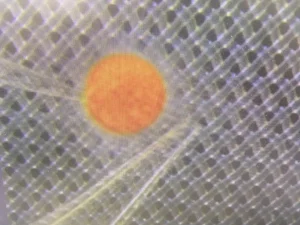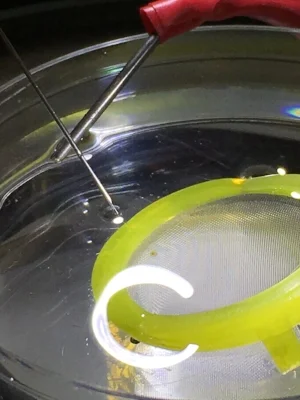Research Experience Placement for Summer 2018
/The micro-environment around the planktic foram O.Universa being analysed for O2 and pH (top). A close up of a live O. universa collected Nov 2017 from the Sargasso Sea, Bermuda (bottom)
Larger view of the O. universa being probed in the laboratory using micro-electrodes
TheFosterLab has a fully funded Research Experience Placement for the summer of 2018 (17 June to 21 September 2018). We are looking for a quantitative student from a discipline not normally funded by NERC (e.g. from chemistry, physics, engineering, biology NOT geology, earth science, environmental science) who is keen to apply their skill set to help understand foraminifera vital effects.
Details of the scheme which is run out of our NERC DTP can be found here: (http://www.spitfire.ac.uk/spitfire-dtp-research-experience-placement-scheme-2018), the project is described below. Please contact Gavin if you are interested (gavin.foster@noc.soton.ac.uk) or have any questions.
Opening the black box: the influence of environment on foraminiferal physiology
The foraminifera are a group of amoeboid sub-mm sized protists with an extensive fossil record that play an important role in global carbon cycling due to their ability to form calcium carbonate shells (known as tests). The chemical composition of their tests is predominantly determined by: (i) the composition of the seawater they grew in and (ii) a number of environmental factors (e.g. temperature, salinity, and pH). The latter forms the basis of many quantitative reconstructions of climate over the last 140 million years. Such reconstructions inform our understanding of how the climate system works and help to improve our predictions of future climate in the face of anthropogenic climate change. Assessing the reliability and uncertainty of our quantitative reconstructions of past climate using the chemical and isotopic composition of foraminifera is therefore key.
However, rather than being passive recorders of the environment they live in, the composition of the foram tests are heavily influenced by the physiology (i.e. life processes) of the foram and its photosymbionts. Indeed, it is the influence of environment on physiology that often imparts an environmental sensitivity to test composition. This influence comes about predominantly because foraminiferal calcification and respiration and symbiont photosynthesis modify the pH in the immediate 1 mm or so around the growing foram, such that it is no longer simply growing in seawater but seawater with a composition that is modified by the growth of the foram itself.
This short project will aim to better understand the role of the external environment on the physiology of foraminifera, and hence test composition, by using microelectrodes to make measurements of the pH, [Ca2+], and O2 in the micro-environment around growing foraminifera under controlled conditions. The student will therefore gain experience in the maintenance and study of foraminifera in laboratory culture and in the development and use of ion-selective microelectrodes to measure pH, Ca and O2 at micron-scale resolution in biological samples.
Experiments will be performed at the National Oceanography Centre under the guidance of Prof. Gavin Foster, Dr. Tali Babila (OES), Dr Glen Wheeler (MBA), Dr Gerald Langer (MBA). The results of this study will feed into a larger NERC funded project SWEET aimed at reconstructing climate 50 million years ago.
The task the student will be to perform the measurement of pH, O2 and Ca2+ gradients in the micro-environment around multiple specimens of two benthic foraminifera species Ammonia sp. (non-symbiont bearing) and Amphistegina (symbiont bearing). The magnitude of the chemical gradients measured are indicative of the fluxes of ions and molecules in the micro-environment allowing a quantification of the magnitude of calcification, respiration and photosynthesis for each individual. By manipulating the environment the foraminifera are inhabiting, e.g. by changing the temperature, pH and chemical composition of the culture media, we will gain unique insights into how environment influences foram physiology.
An approximate plan is:
Weeks 1-2: ambient conditions
Weeks 2-5: modified temperature
Weeks 5-7: modified pH
Weeks 7-10: modified chemical composition
No prior knowledge of foraminiferal biology is required but experience with the use of micro-electrodes and an understanding of how they work is desirable. The candidate should also be numerate and comfortable with data processing.






